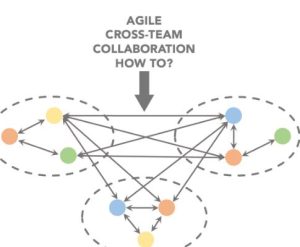How Does Agile Team Collaboration Work?
Agile team collaboration is a dynamic approach that significantly enhances the flexibility, efficiency, and productivity of teams. By emphasizing adaptability and continuous improvement, this method has revolutionized how projects are managed and executed across various industries.

Core Principles of Agile Collaboration
Agile collaboration is grounded in the Agile Manifesto, which prioritizes individuals and interactions over processes and tools, working software over comprehensive documentation, customer collaboration over contract negotiation, and responding to change over following a plan. The effectiveness of this approach is reflected in data showing that agile projects are three times more likely to succeed than projects using traditional methodologies.
Frequent Iterations and Feedback Loops
One of the hallmarks of agile team collaboration is the use of short, iterative cycles known as sprints. These typically last from one to four weeks and allow teams to break down large projects into manageable units. At the end of each sprint, teams review their progress and adjust their strategies based on direct feedback from stakeholders and team members. This iterative process leads to a 60% increase in project adaptability according to industry surveys.
Daily Stand-Up Meetings
Daily stand-up meetings are a critical component of agile collaboration. These brief, time-boxed meetings (usually lasting no more than 15 minutes) require team members to discuss what they accomplished the previous day, what they will work on today, and any obstacles they are facing. This ensures that everyone is aligned and can quickly address potential issues. Statistics show that teams that conduct daily stand-ups increase their productivity by up to 20%.
Cross-Functional Teams
Agile methodology promotes the formation of cross-functional teams, where members from different disciplines work together throughout the project lifecycle. This structure leverages diverse skills and perspectives, which significantly enhances problem-solving capabilities and innovation. Research indicates that cross-functional agile teams are 30% more efficient in delivering market-ready solutions than traditional teams.
Emphasis on Transparency and Communication
Transparency is another cornerstone of agile collaboration. Agile teams use visual management tools like Kanban boards or Scrum boards to track progress and make the project's details accessible to all team members. This visibility helps prevent misunderstandings and ensures that everyone is aware of the project's status and challenges. Companies report a 25% improvement in team morale and engagement when using these tools.
Leveraging Technology for Enhanced Collaboration
To facilitate agile team collaboration, many teams utilize specialized software tools that support agile practices. These tools help manage backlogs, plan sprints, and track progress, enabling remote and distributed teams to collaborate effectively regardless of their physical location. Data shows that the use of agile project management software can reduce the time to market by up to 50%.
Elevate Your Agile Meetings
For those looking to delve deeper into optimizing agile methodologies within their teams, exploring resources on agile team collaboration can provide valuable insights and practical tips.
Agile team collaboration is not just about managing projects but about fostering a culture that is flexible, responsive, and focused on delivering value. As teams continue to adapt and evolve, the principles of agile collaboration remain a reliable guide to achieving exceptional results. By embracing these practices, teams can drive innovation, respond swiftly to changing conditions, and achieve greater success in their endeavors.
